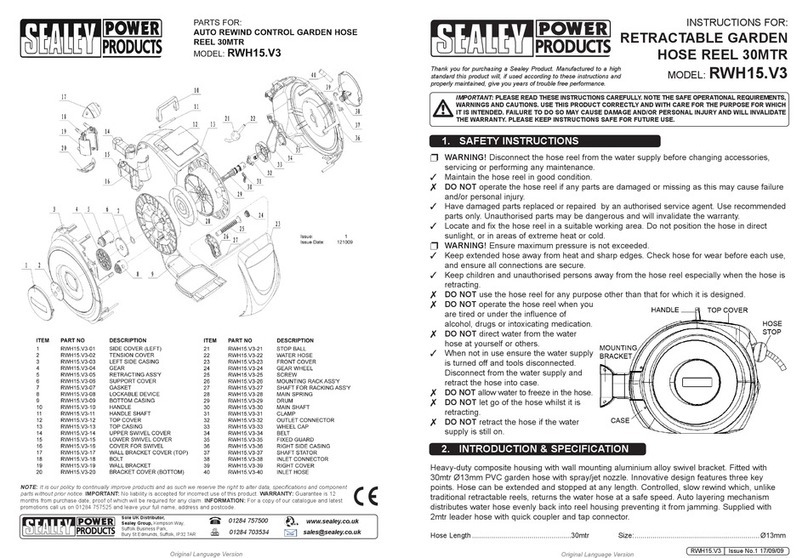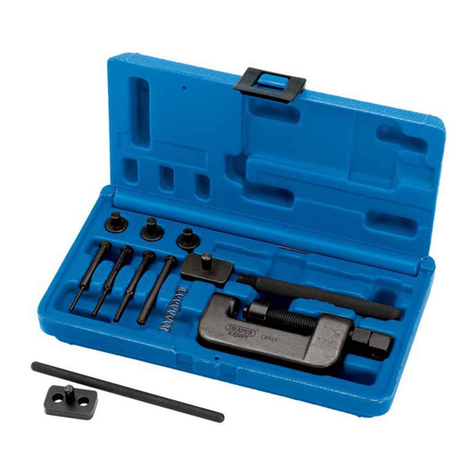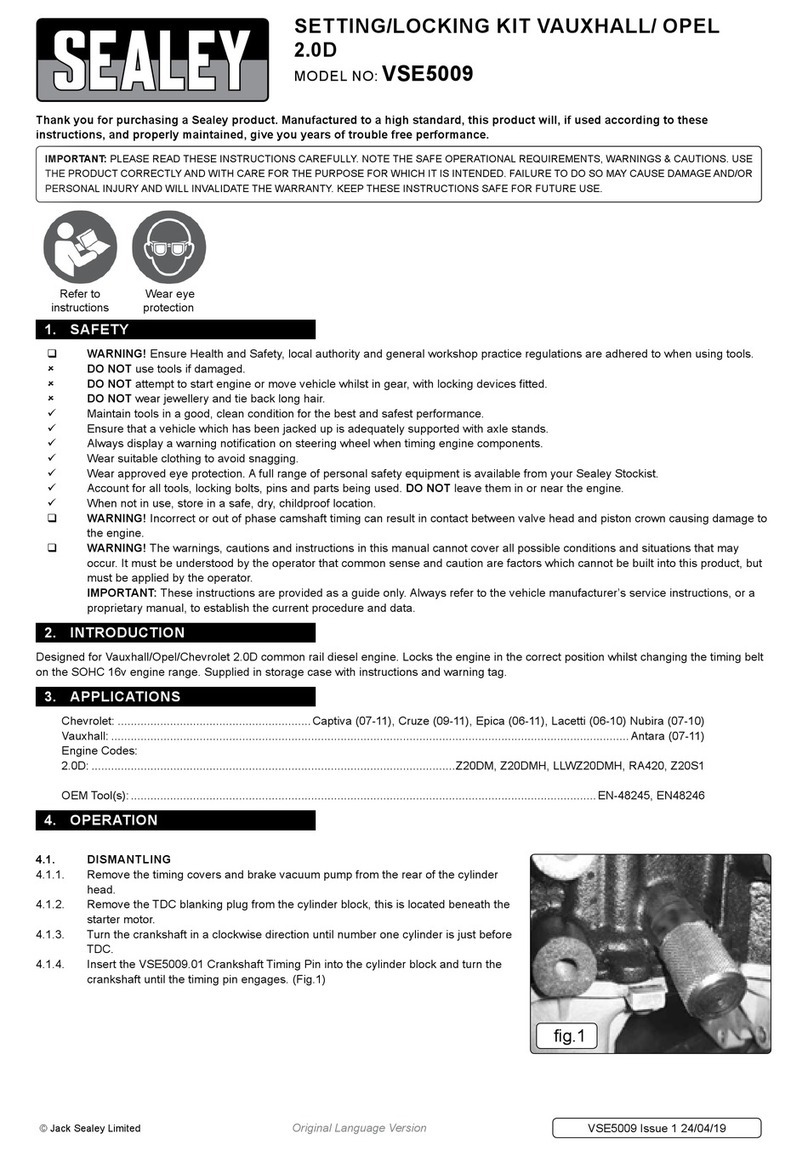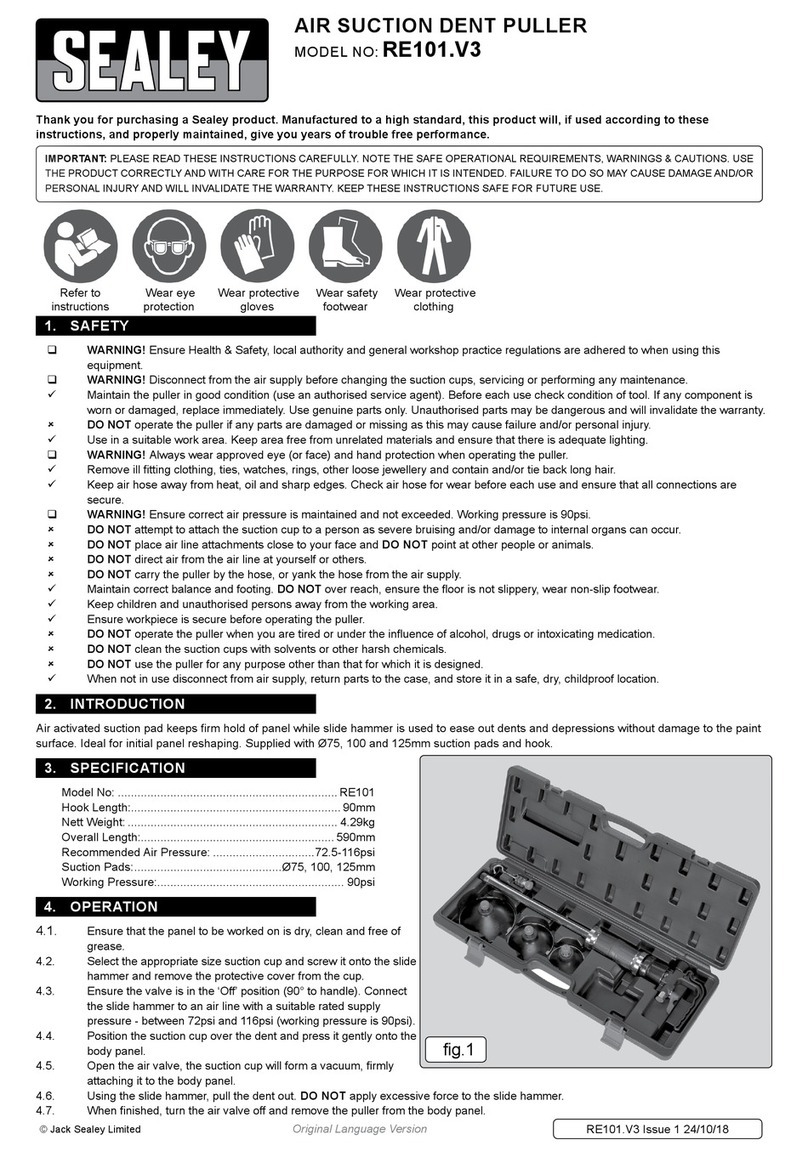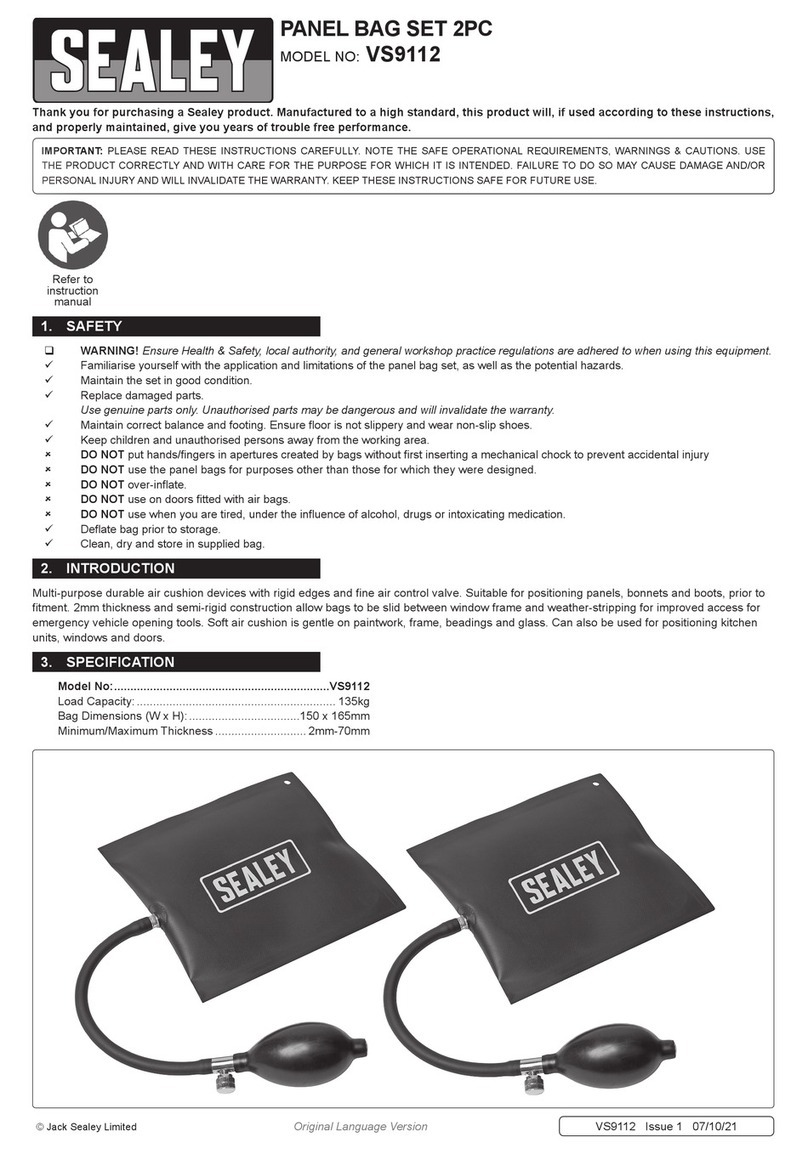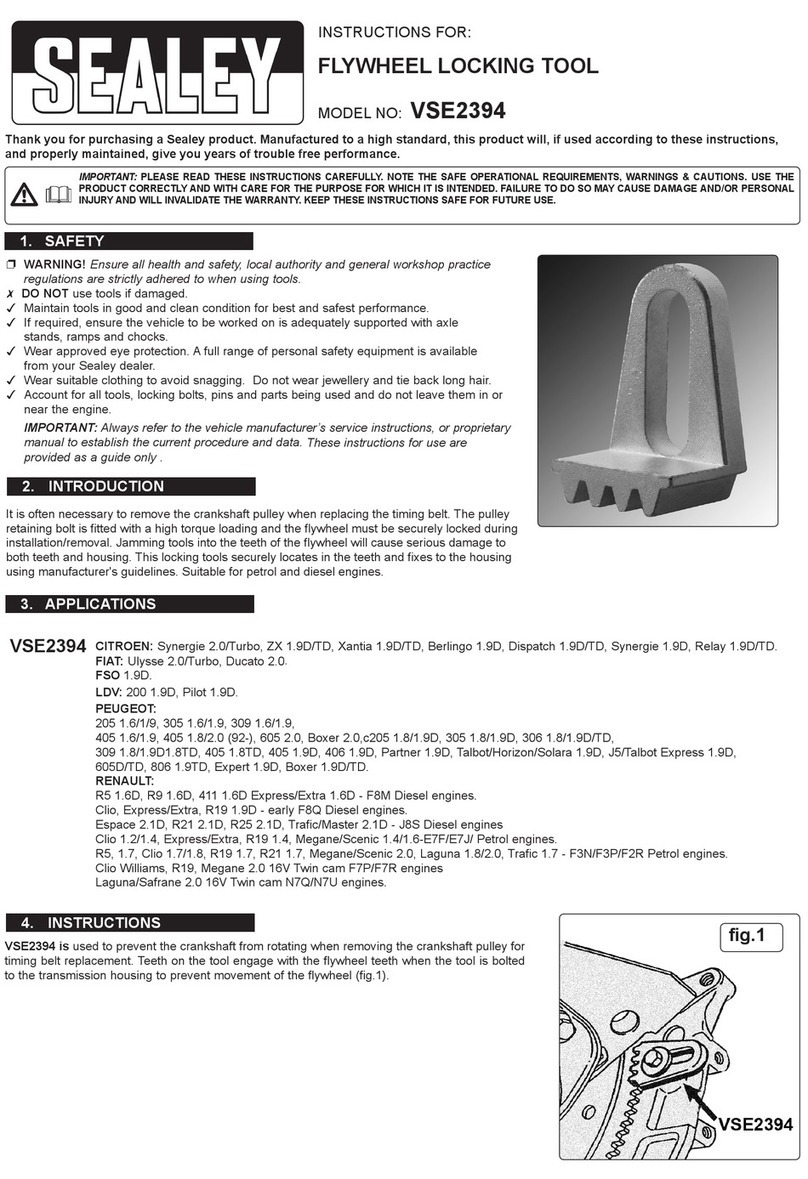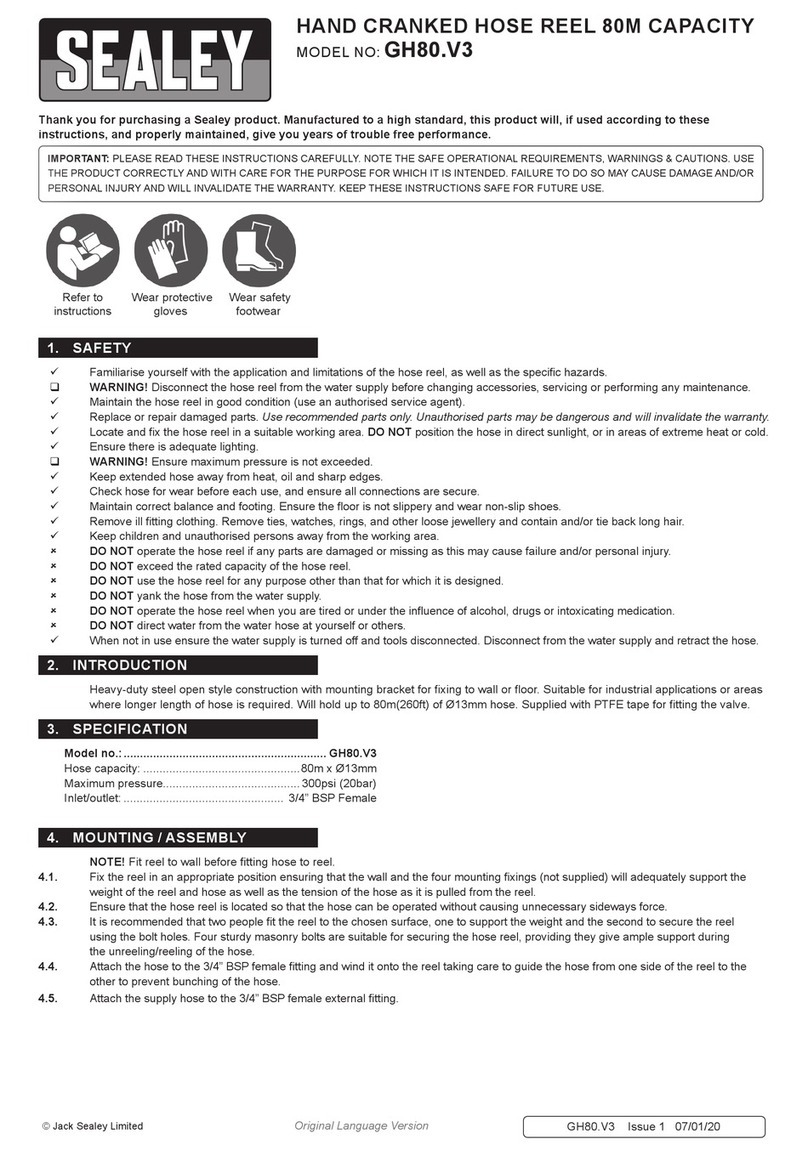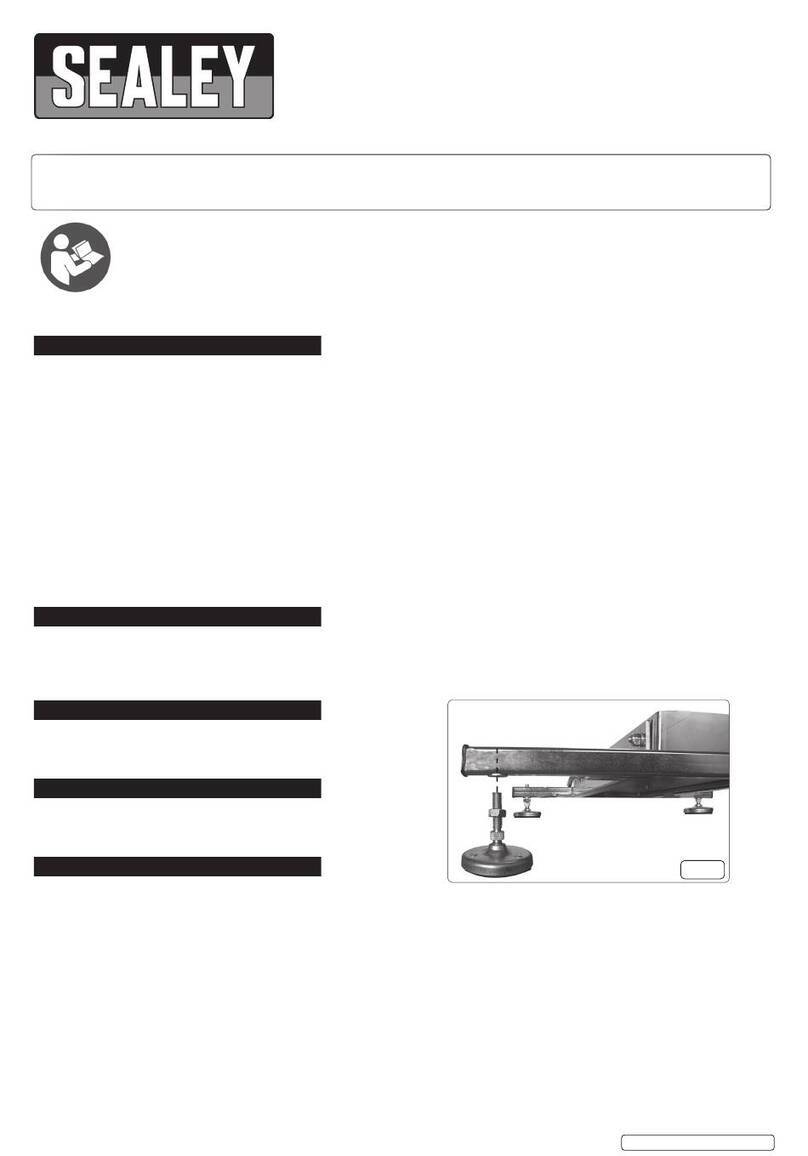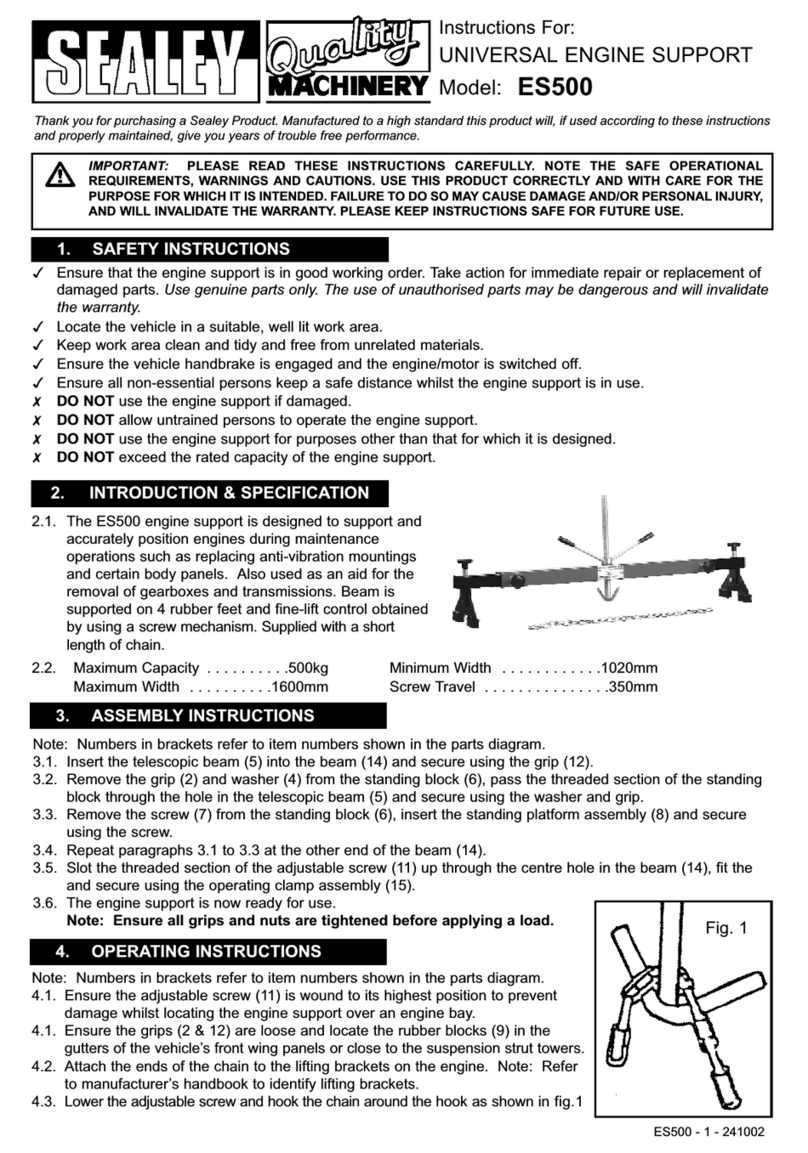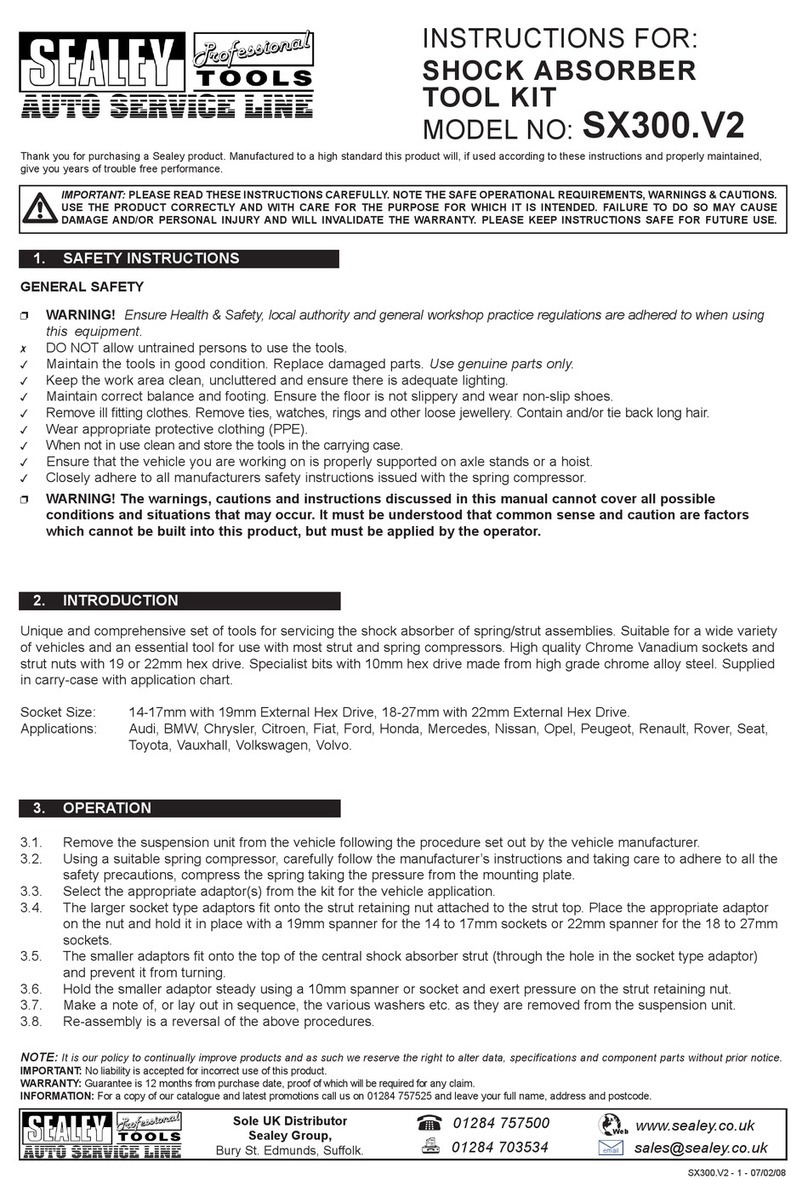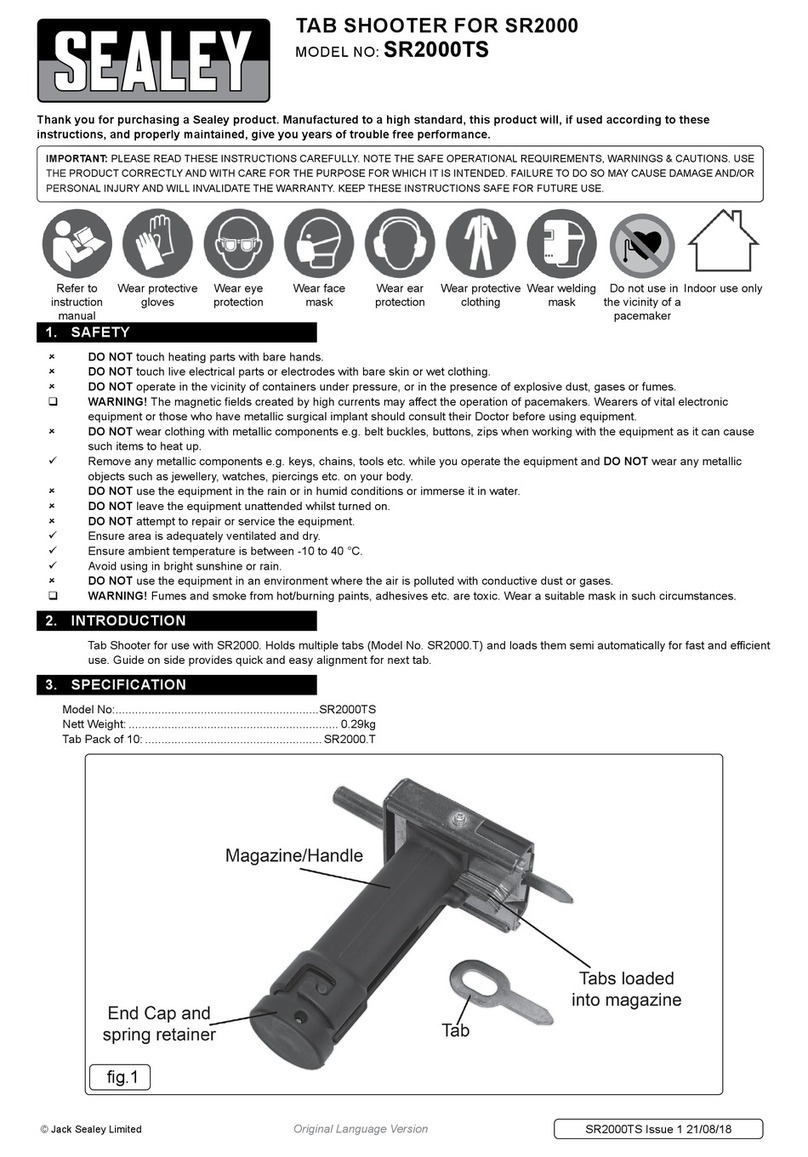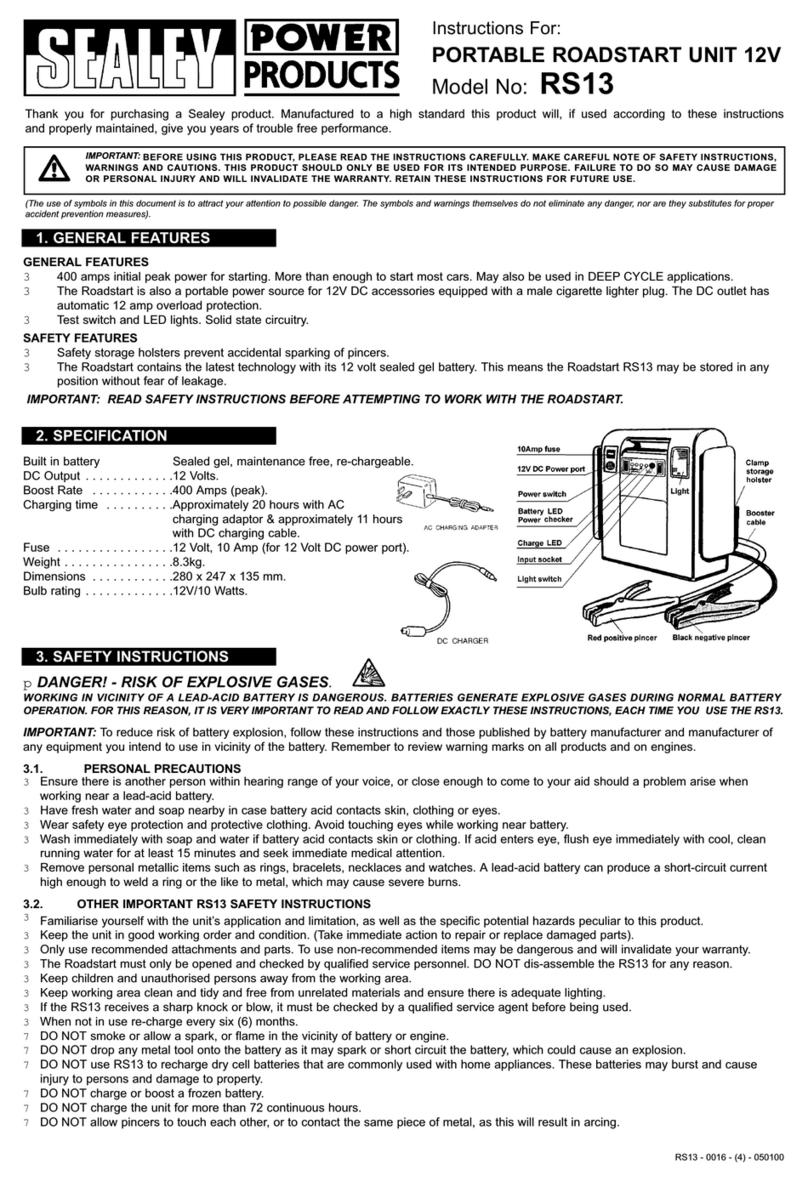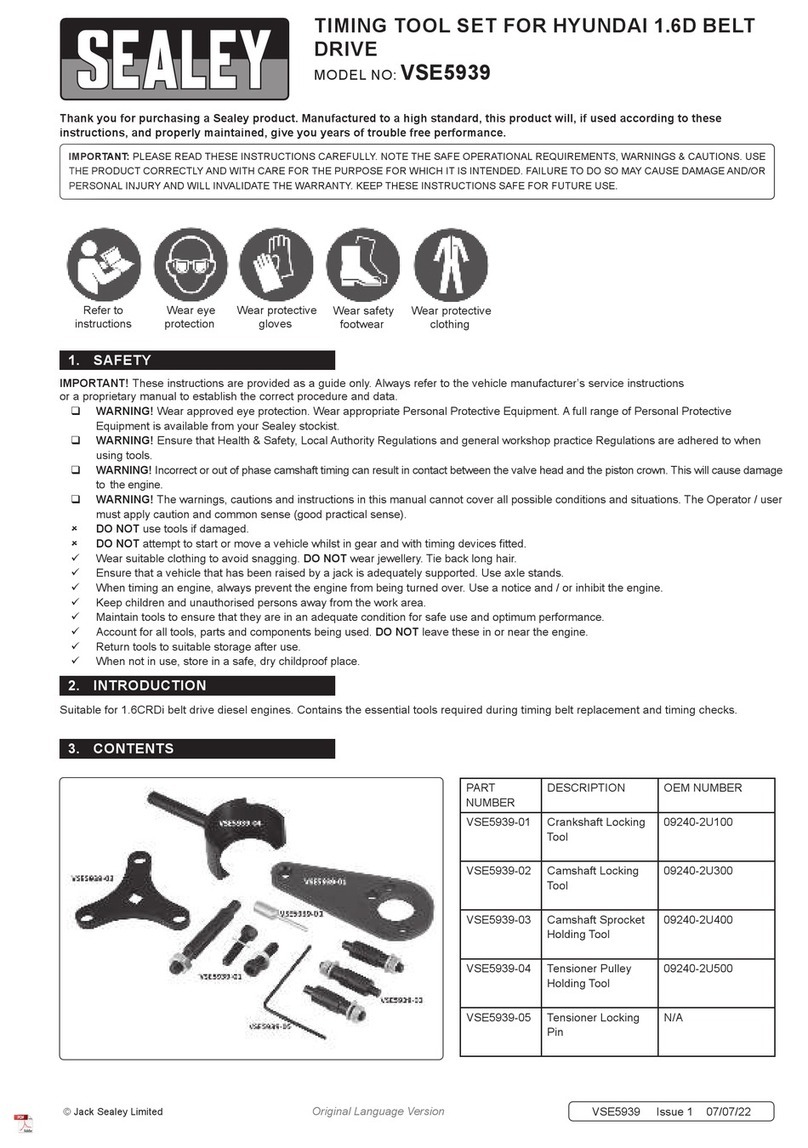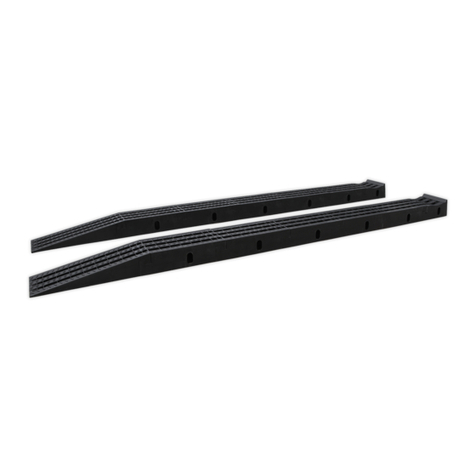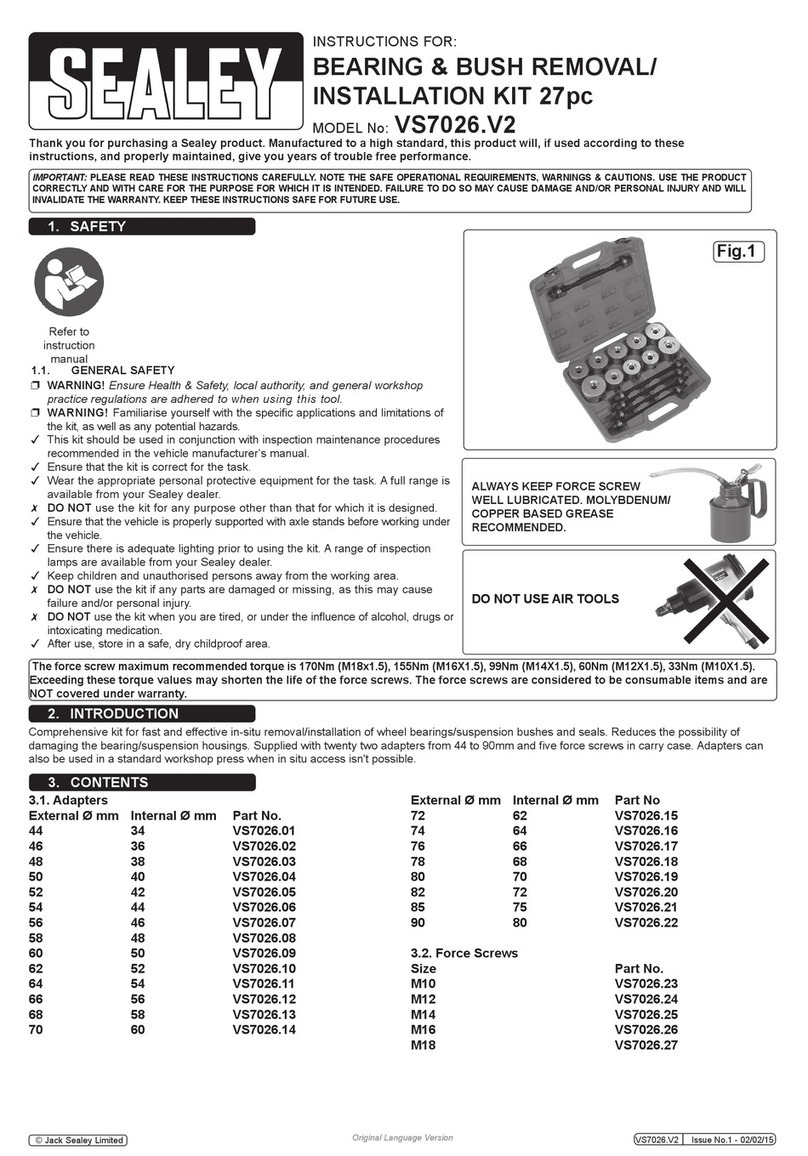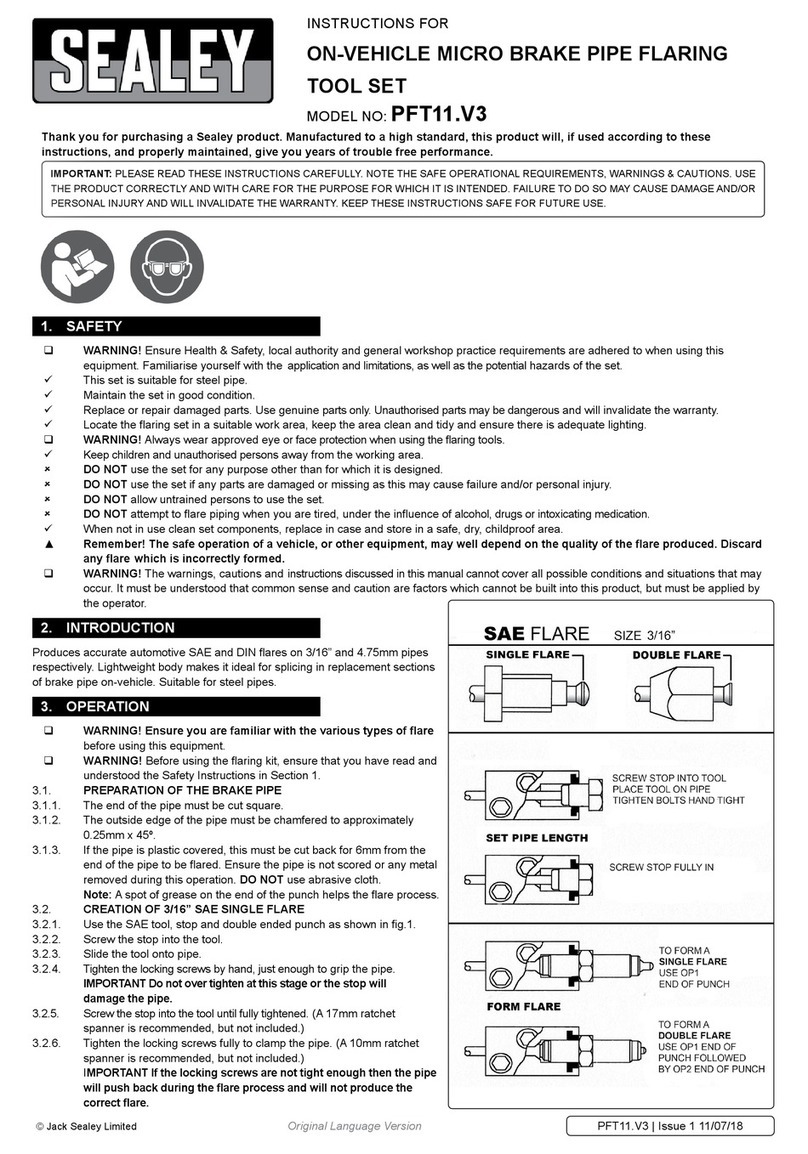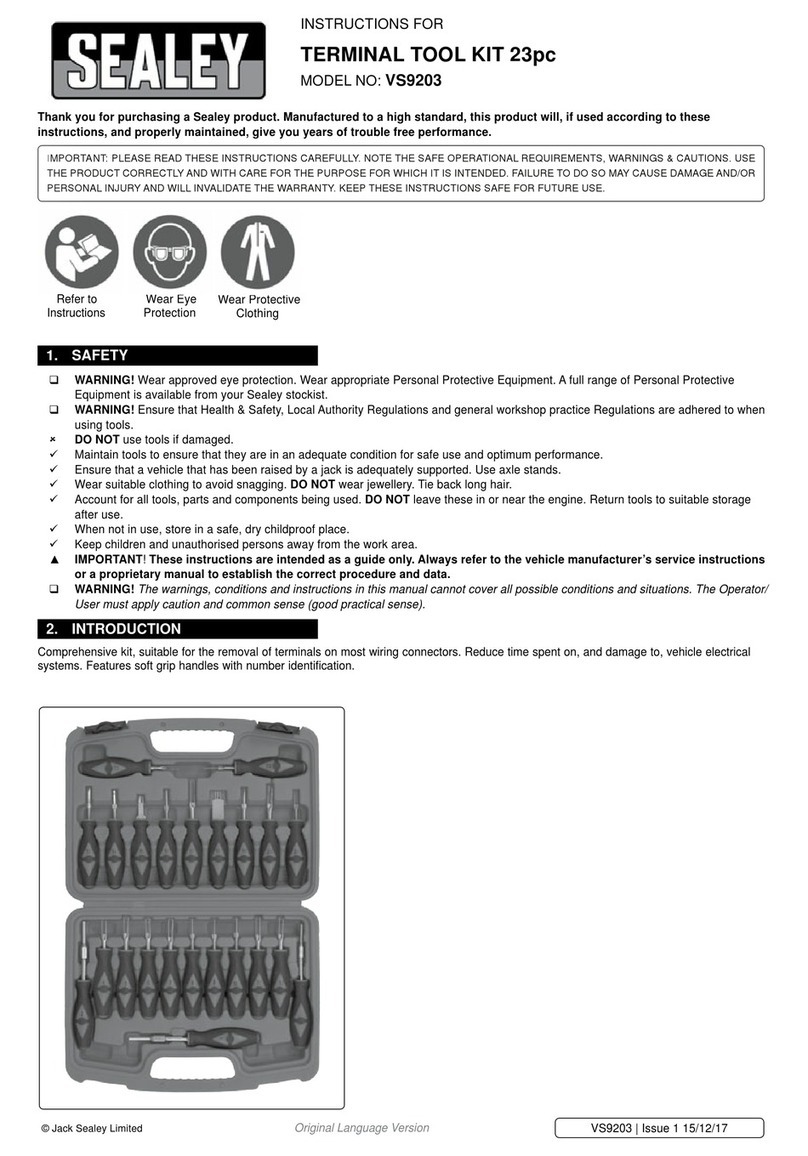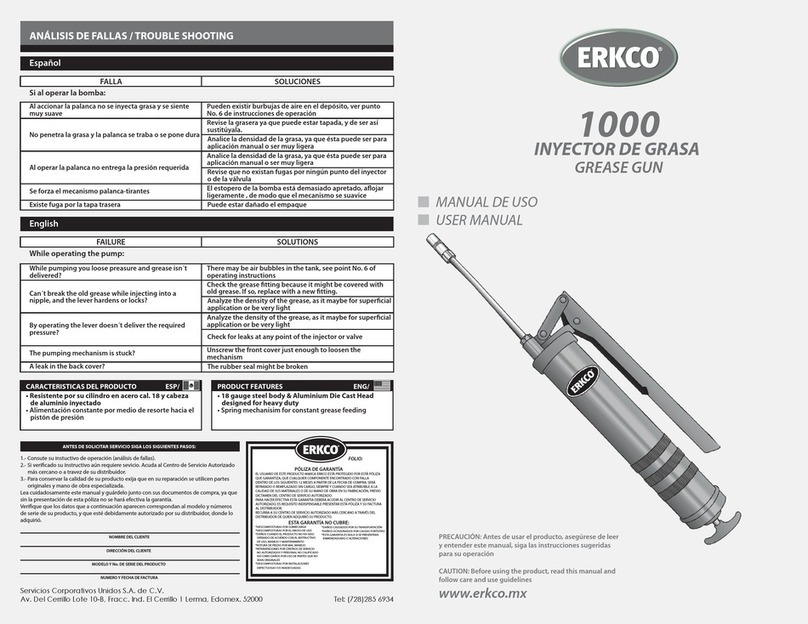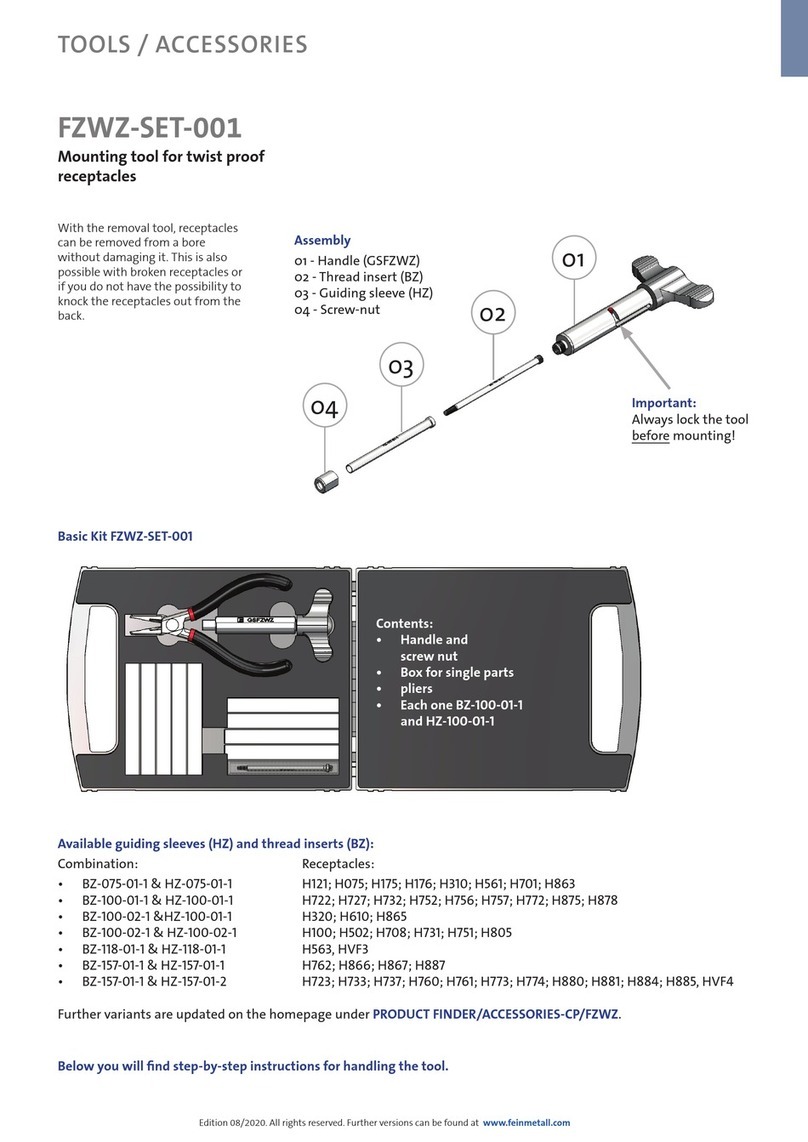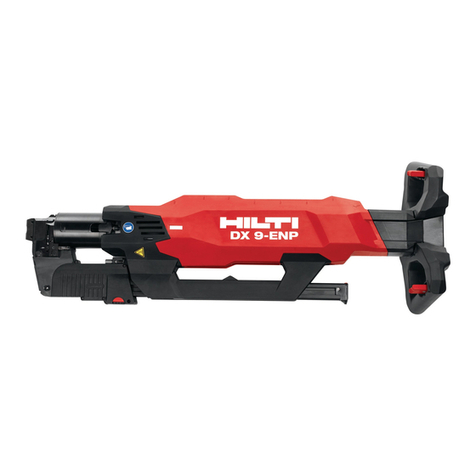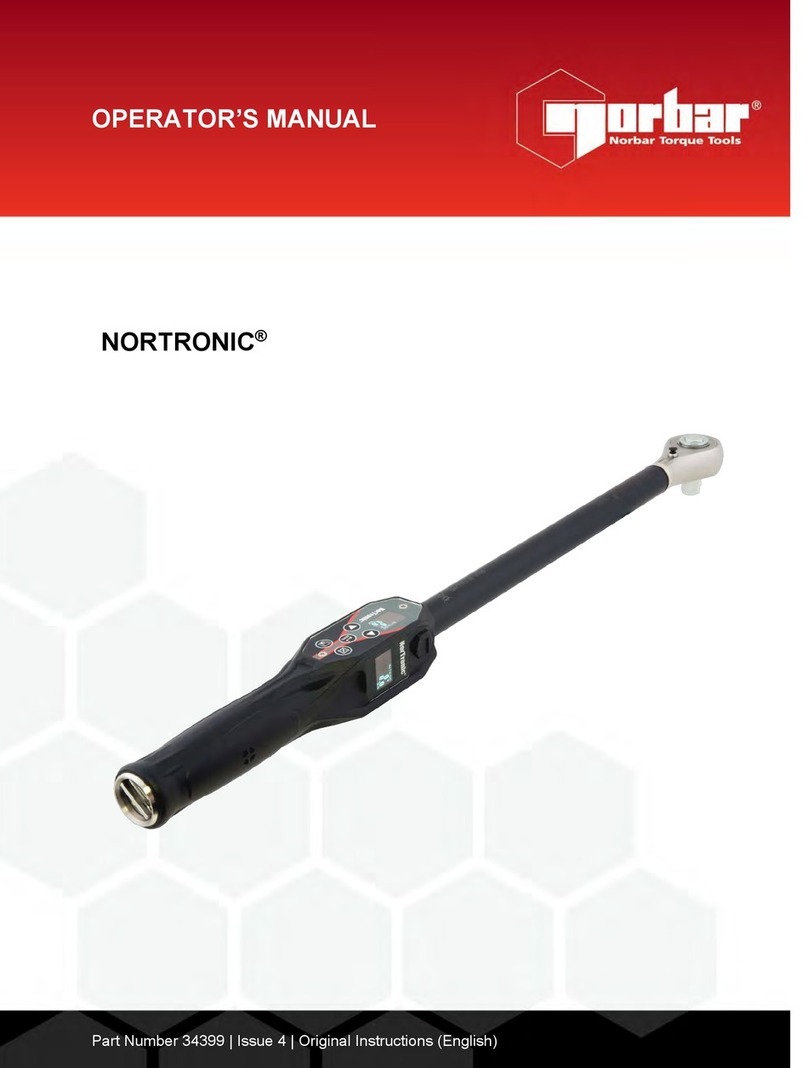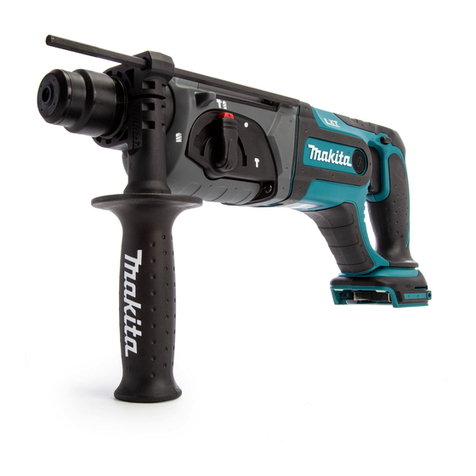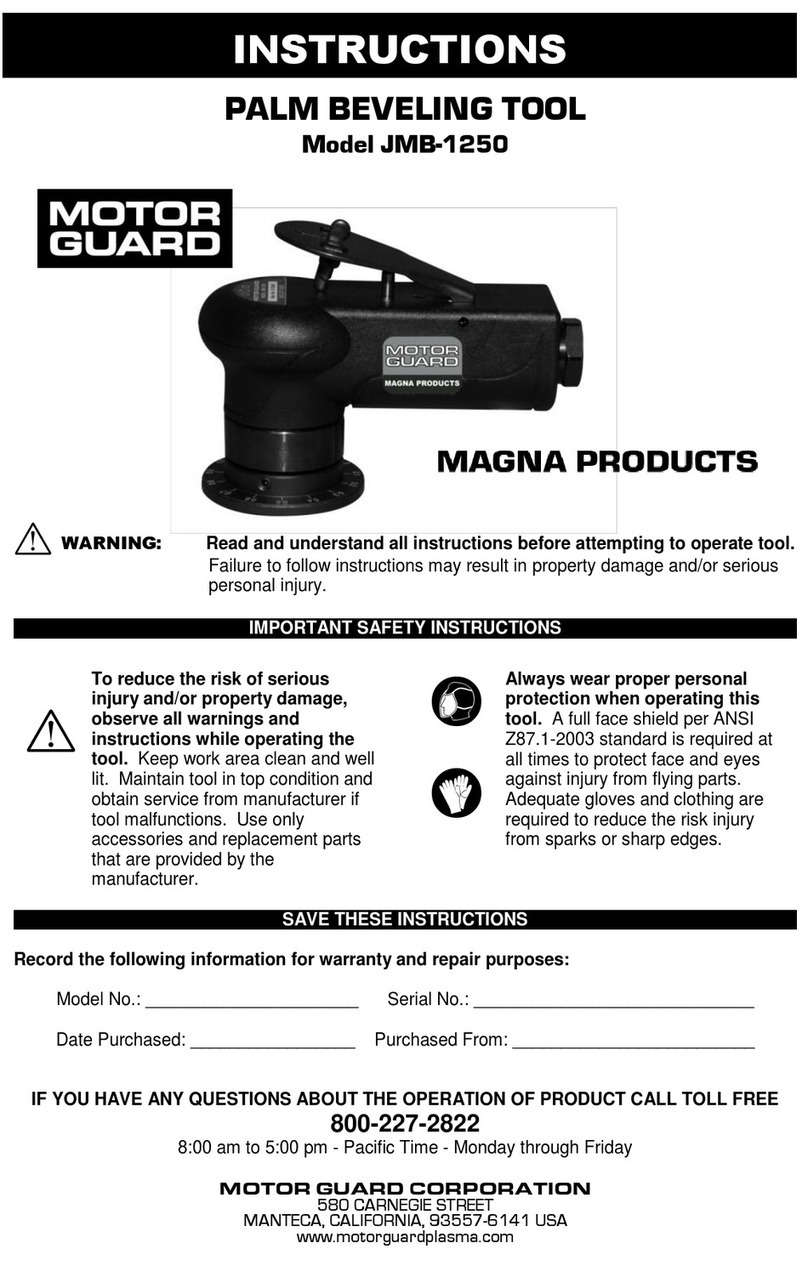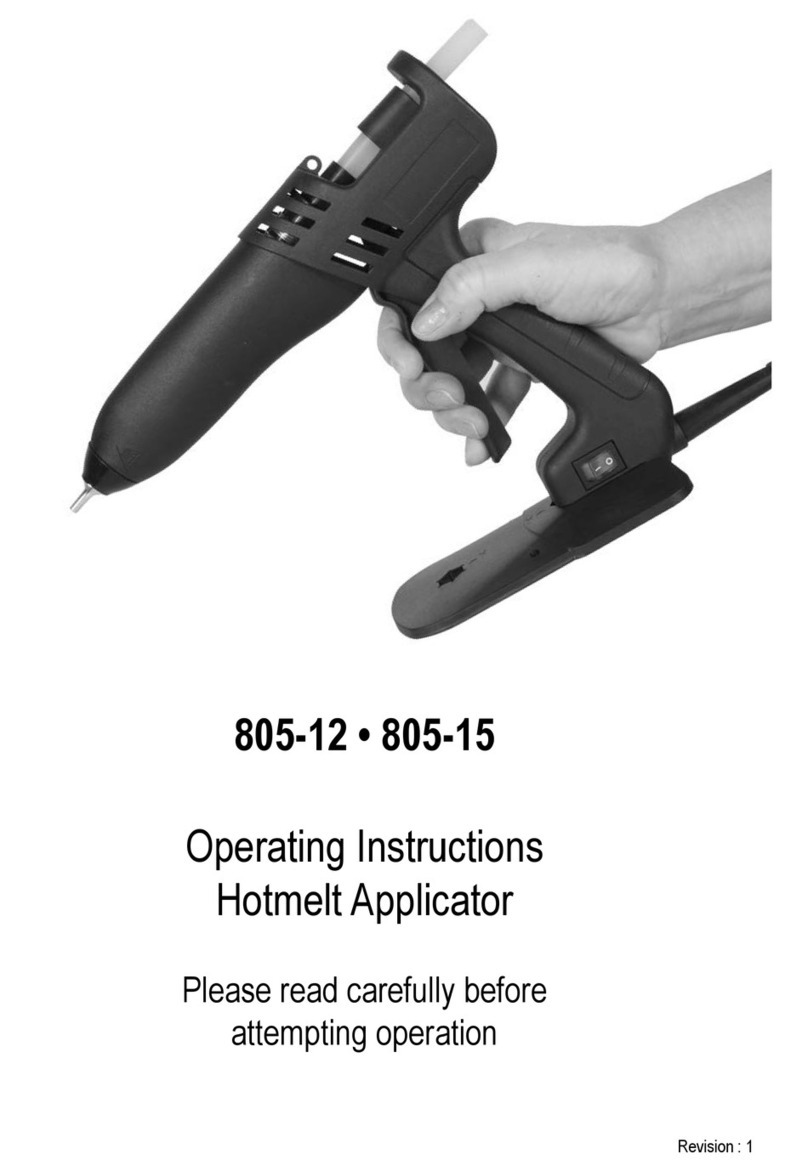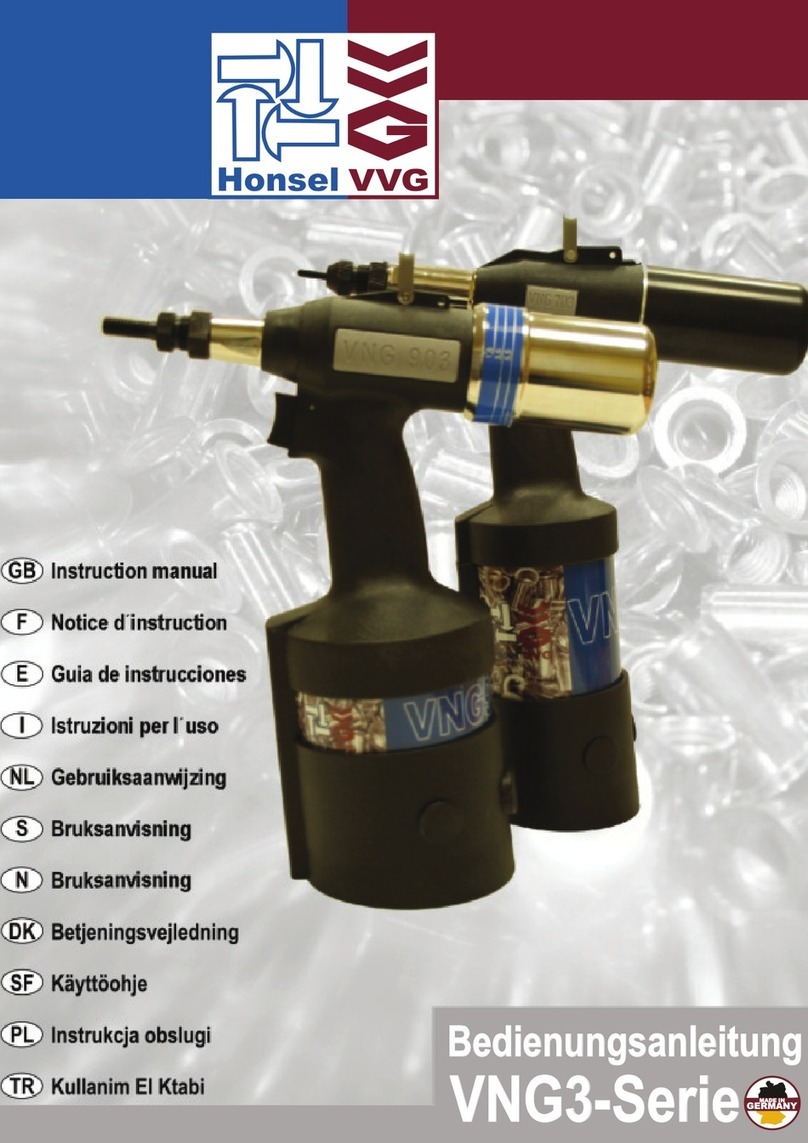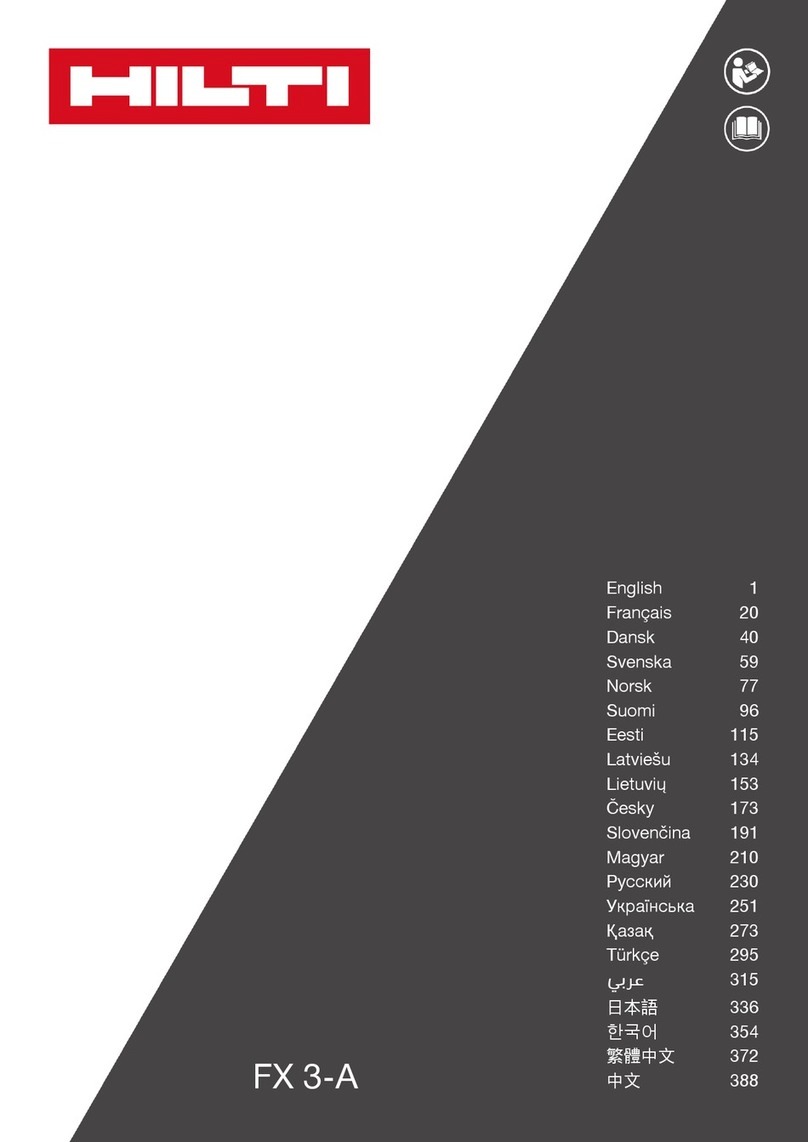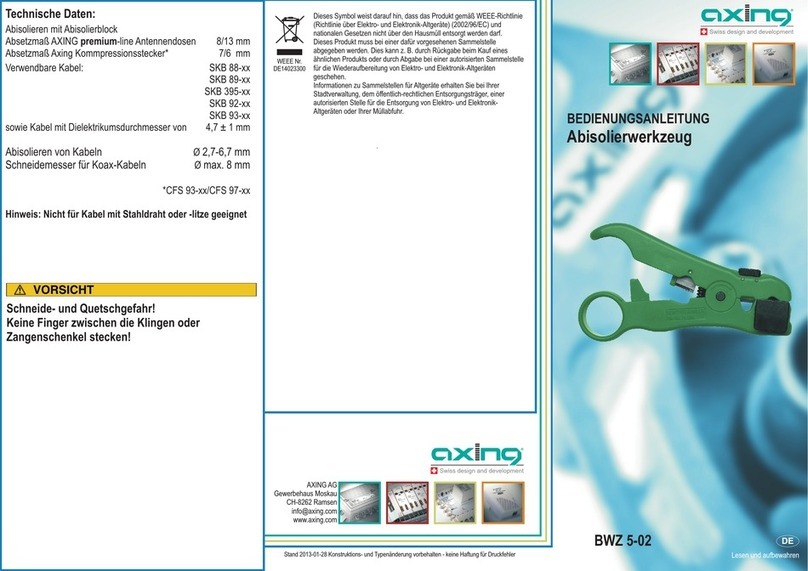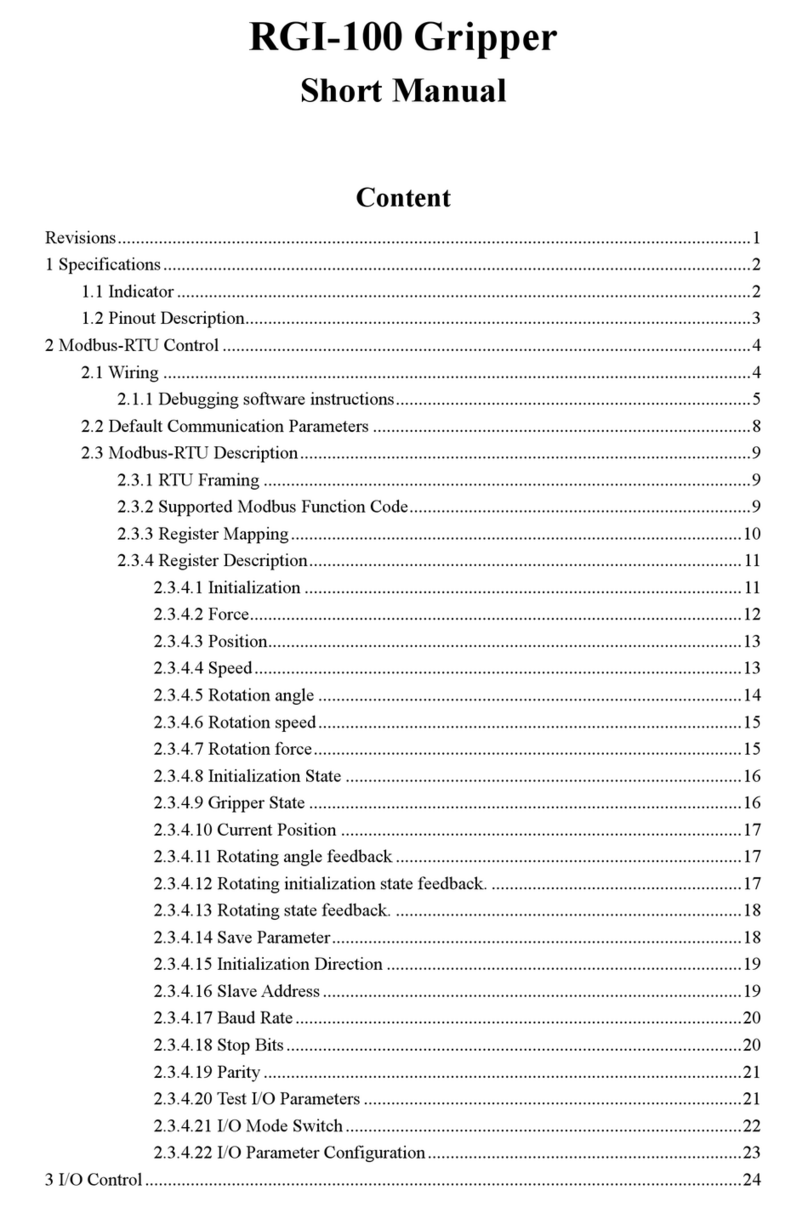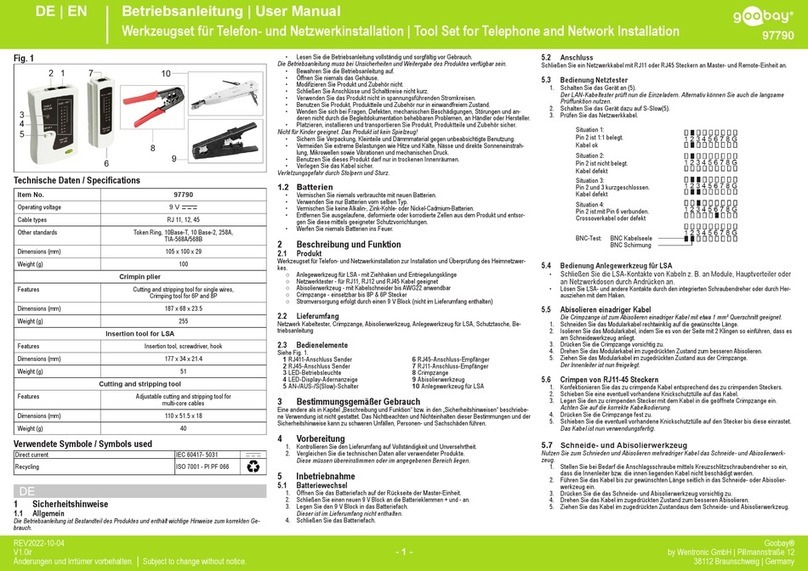
AIR ADHESIVE STRIPE REMOVAL TOOL PREMIER
MODEL NO: SA95.V3
Thank you for purchasing a Sealey product. Manufactured to a high standard, this product will, if used according to these instructions,
and properly maintained, give you years of trouble free performance.
IMPORTANT: PLEASE READ THESE INSTRUCTIONS CAREFULLY. NOTE THE SAFE OPERATIONAL REQUIREMENTS, WARNINGS & CAUTIONS. USE
THE PRODUCT CORRECTLY AND WITH CARE FOR THE PURPOSE FOR WHICH IT IS INTENDED. FAILURE TO DO SO MAY CAUSE DAMAGE AND/OR
PERSONAL INJURY AND WILL INVALIDATE THE WARRANTY. KEEP THESE INSTRUCTIONS SAFE FOR FUTURE USE.
1. SAFETY
WARNING! Ensure Health & Safety, local authority and general workshop practice regulations are adhered to when using this equipment.
WARNING! Disconnect from air supply before changing accessories or servicing.
9Maintain the tool in good condition (use an authorised service agent).
9Replace or repair damaged parts. Use genuine parts only. Non-authorised parts may be dangerous and will invalidate the warranty.
9Use in a suitable clean and tidy work area, free from unrelated materials and with adequate lighting.
9Before each use check pad for condition. If worn or damaged replace immediately.
9Ensure the pad rating is the same as, or greater than, the RPM rating of the tool.
9Ensure there are no flammable or combustible materials near the work area.
WARNING! Always wear approved eye or face and hand protection when operating the tool.
9Use face, dust, or respiratory protection in accordance with COSHH regulations.
9Depending on the task, noise levels may exceed 87dB in which case wear safety ear defenders.
9Remove ill fitting clothing. Remove ties, watches, rings and other loose jewellery and contain and/or tie back long hair.
9Wear appropriate protective clothing and keep hands and body clear of working parts.
9Maintain correct balance and footing. Ensure the floor is not slippery and wear non-slip shoes.
9Keep children and unauthorised persons away from the work area.
9Check moving parts alignment on a regular basis.
9Ensure workpiece is secure before operating the tool. Never hold a workpiece by hand.
9Check the workpiece to ensure there are no protruding screws, bolts, nuts, nails, stones, etc.
9Avoid unintentional starting.
WARNING! Ensure correct air pressure is maintained and not exceeded. Recommended pressure 90psi.
9Keep air hose away from heat, oil and sharp edges. Check air hose for wear before each use and ensure that all connections are secure.
9Prolonged exposure to vibration from this tool poses a health risk. It is the owner’s responsibility to correctly assess the potential hazard
and issue guidelines for safe periods of use and offer suitable protective equipment.
8DO NOT use the tool for a task it is not designed to perform.
8DO NOT operate tool if any parts are damaged or missing as this may cause failure and/or personal injury.
WARNING! DO NOT use on any materials containing asbestos.
8DO NOT carry the tool by the hose, or yank the hose from the air supply.
8DO NOT operate tool when you are tired, under the influence of alcohol, drugs or intoxicating medication.
8DO NOT carry the tool with your finger on the power lever.
8DO NOT direct air from the air hose at yourself or others.
9When not in use disconnect from air supply and store in a safe, dry, childproof location.
2. INTRODUCTION
Composite cover moulded around lightweight aluminium alloy housing reduces effects of chill on operator’s hands and provides added control. Air
motor with quality bearings for smooth and powerful operation. Exhaust outlet adjusts 360° keeping air ow away from operator. Ideal for removing
pinstripes or double-sided tape from panel prior to renishing. Suitable for the professional workshop.
3. SPECIFICATION
Model no .................................................................. SA95.V3
Free speed...............................................................2500rpm
Pad size .............................................................Ø88 x 15mm
Inlet size....................................................................1/4”BSP
Operating pressure ....................................................... 90psi
Weight.............................................................................. 1kg
Noise power/pressure ........................................ 103/92dB(A)
Vibration/uncertainty ........................................ 0.49/0.54m/s²
Thread size .............................................................. 1/4”UNC
Replacement pad .....................................................SA95/PX
Refer to
instruction
manual
Wear eye
protection
Wear a mask Wear protective
gloves
Wear ear
protection
Original Language Version
© Jack Sealey Limited SA95.V3 | Issue:2 (H,F) 19/12/18


